Special feature of 1905 film network "Turn your back to darkness and turn to light."Inspired by Li Dazhao, tens of thousands of workers in Kailuan Coal Mine lit the miner’s lamp overhead, which became a single spark. The scene was shocking and magnificent, and it became one of the highlights of the film.

The Pioneer has received rave reviews since it was released a week ago. The film uses advanced audio-visual language to reproduce the magnificent life of Li Dazhao, a pioneer of communism, and achieves a balance between artistry, commerciality and ideology. Among them, the unique, poetic and romantic image style is also impressive.
"We want to challenge a brand-new style, truly shape the light into a’ role’ and participate more in scenes and characters." Gao Weizhe, director of photography in The Pioneer, interprets this.
The Pioneer is Gao Weizhe’s first feature film in the true sense. He has previously served as a photography director for "The Night before" and "The Bridge of People".
As a newcomer to the film, how did Gao Weizhe, the director of photography, cooperate tacitly with the director to jointly achieve this masterpiece? In this issue of Behind the Scene, let’s follow the host Lan Yu and photographer Gao Weizhe to reveal The Pioneer’s "light and shadow" story.
style
"Hard and romantic" is Gao Weizhe’s summary of The Pioneer’s image style, which also conforms to the tone of the film story and characters.In the preparation stage of the film, Gao Weizhe consulted a lot of materials and looked for visual reference. Among them, the styles of Italian realistic painter Caravaggio and Dutch painter Rembrandt made him shine.
In Caravaggio’s group portrait paintings, the light in the picture has a strong participation, and all the characters and spaces are reshaped by light. "There is a feeling that the characters are fixed in history by light at this moment."
Rembrandt is good at dealing with the relationship between characters and space with light in portraits. "Light serves space." Inspired by these two masters, the revolutionary’s "hard and romantic" tone has gradually taken shape.
"Hardness is reflected in the image, which is a big light ratio and a big contrast; Romance makes the highlights diffuse through a small amount of highlights. " Gao Weizhe explained, "To make light appear, we need to use many intermediate media, such as wind, rain, snow, fog, steam and smoke. In the shocking train steam scene, steam provides a lot of highlights, bringing romance and poetry. "


In order to unify the styles, Gao Weizhe and the color matching team also specially developed a set of "customized filters" for The Pioneer, which is called LUT (Color Lookup Table).
Art, clothing, makeup and other departments have also cooperated with them to adjust the colors of scenes, props and clothing. "The same dress will prepare four to five different shades of gray. ……There is no absolute white wall, but it is a’ white wall’ with medium gray and heavy gray. The art and landscape departments have also added a lot of texture effects to the wall to jointly improve the texture of the image. "
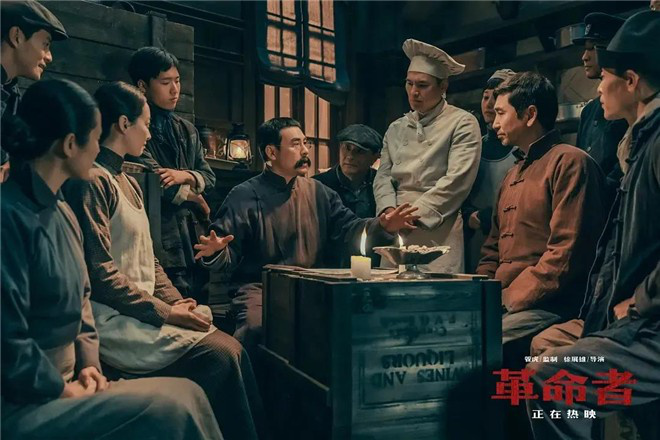
The shaping and application of light is a great breakthrough of Gao Weizhe in The Pioneer photography. "We want to challenge a brand-new style, truly shape light into a’ role’ and participate in scenes and characters to a greater extent."
scene
In order to show the revolutionary picture of China society in the 20th century, there are many magnificent and shocking scenes in The Pioneer, which also put forward high requirements for photography and scheduling.Among them, the shooting process of several big scenes such as "Kailuan Coal Mine Workers’ Strike" and "March 18th Massacre" made Gao Weizhe fresh in his memory.
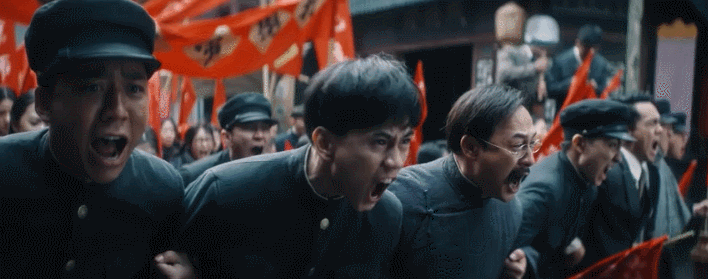
The biggest difficulty of "strike drama" lies in "finding the railway". The art team originally found a deserted mining area, with both railways and open spaces, and a wall more than 20 meters high next to it.This environment made Gao Weizhe suddenly have a whimsy, and proposed that the miners’ shadows could be cast on the wall, waving sickles and axes, and the history of China Revolution could be unfolded like a picture scroll.
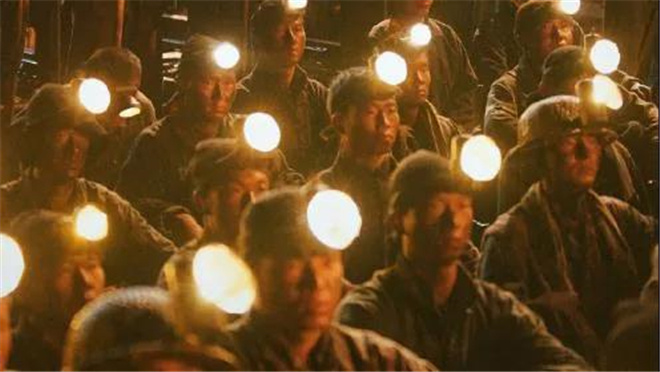
This idea excited the team, but because the venue was too far away and the cost of personnel transfer was too high, it almost gave up. Finally, thanks to Huo Tingxiao of production designer, the tracks and high walls were built from scratch in the open space near Hengdian Airport, and the train at that time was restored at 1:1, so that the picture in Gao Weizhe’s mind could "shine into reality".
During the filming process, Gao Weizhe designed the headlights of miners on one side and the headlights of trains on the other, and the two forces "turned into" the shocking effect of two beams of light, which not only had visual impact, but also met the theme expression.
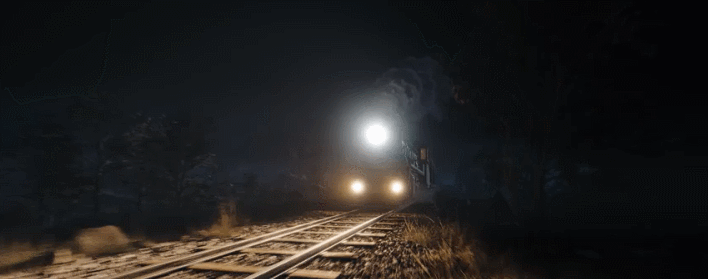
Due to the limited number of extras who play workers, Gao Weizhe had a brainwave and came up with a trick: turning the camera into a fixed position, dividing the picture into several parts on the monitor with a red pen, and directing the group performance to move continuously, eliminating the later special effects, and the light was particularly real. "Overlapping real materials into one picture has formed this real and shocking effect."
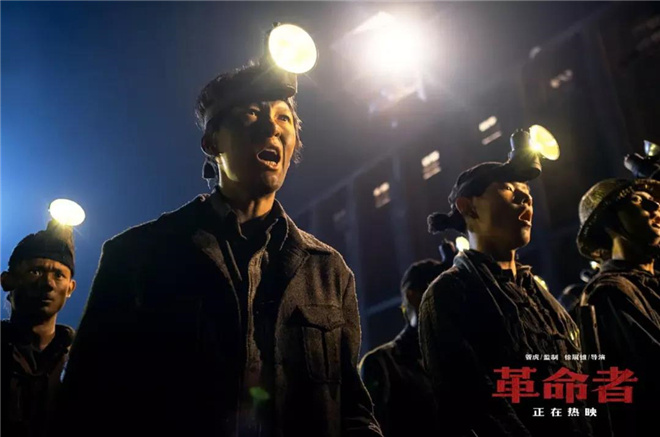
If the challenge of the "strike drama" is a "quiet" venue, the shooting difficulty of the "March 18th Massacre" lies in "moving".On the one hand, it is the "movement" of space. The camera starts from the close-up of the slogan "Down with imperialism", shakes from the alley to the main street, and substitutes the audience into the event little by little through the presentation of the space by the camera.
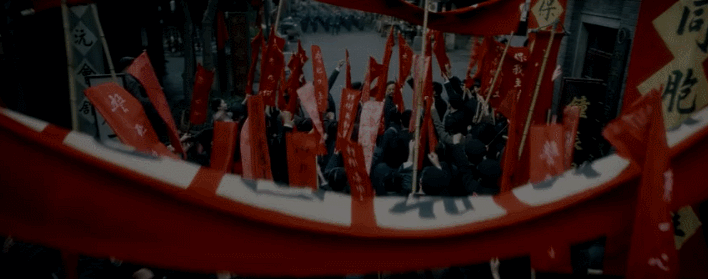
On the other hand, it is the "dynamic" perspective. The camera does not completely surround Li Dazhao himself, but will stay on ordinary people such as beggars on the street, uncles drinking tea at the door, women eating melon seeds, etc. Through the movement of the camera, they will be associated with Li Dazhao, vividly depicting all kinds of people in the revolutionary movement.
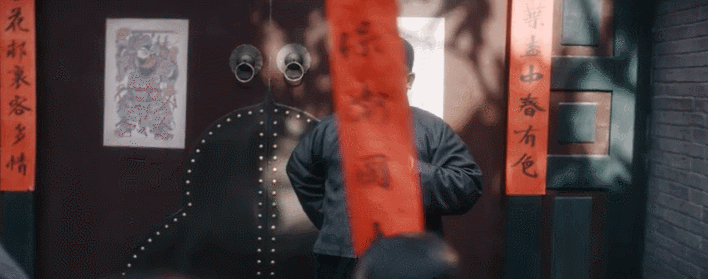
moment
A moment is eternity. The big scene in The Pioneer is exciting, and many colorful moments can also be called "a stroke of genius".For example, Li Dazhao stood under the magnolia tree in early spring, and it was very poetic to pick a paragraph sandwiched in the book, which was talked about by many viewers.

This magnolia tree was discovered by Gao Weizhe by accident. "When filming Chen Duxiu’s release from prison, I suddenly found a magnolia tree. Because Hengdian scenic spots are artificially built, such’ real life’ is rare, so I called the director and wanted to shoot a scene in this environment. This is when you are trying to shoot, there will always be some providence. "
Two scenes in prison are also remarkable. He offered to shoot a scene in which Li Dazhao shook hands with a "comrade in heaven". Gao Weizhe thought that he could put a headlight on the roof and let the beam shine on the tightly clasped hand, thus completing this touching "spiritual transmission".

In another prison scene, Gao Weizhe originally planned to only shine a beam of light on the wall, but he didn’t expect that when the light slowly rolled in, Zhang Songwen made an impromptu gesture of "dove of peace", and the shadow was cast on the wall. The picture was beautiful and meaningful. This sudden inspiration made Gao Weizhe and director Xu Zhanxiong get goose bumps.
"Mr. Song Wen completely turned himself into Mr. Li Dazhao, immersed in emotions and situations, and there were many such ingenious pens, which greatly enhanced the poetic sense of the whole movie." Gao Weizhen said.

This devotion is also the working status of Gao Weizhe and the whole The Pioneer crew. Although the shooting conditions in the cold winter are difficult, I have to get up before dawn at three or four o’clock every day, but Gao Weizhe’s heart is still full of the creator’s happiness. "It’s very happy to finally be able to give full play to my creation by myself."
Gao Weizhe chose the word "ingenuity" to describe The Pioneer’s team spirit. "No one gives up because it is difficult, but tries to solve it in various ways, doing their job and presenting the best effect on the screen. The Pioneer is the crystallization of authorship and industrialization. "
In 1916, 27-year-old Li Dazhao wrote in Youth: I wish my dear youth, born in youth and died in youth.Nowadays, we are also delighted to see that a group of young filmmakers like Gao Weizhe are behind such a masterpiece of The Pioneer.
Finally, talking about the future, Gao Weizhe said with longing: "I hope to get out of my comfort zone and safety zone and participate in making a great work that can stay in the history of movies."